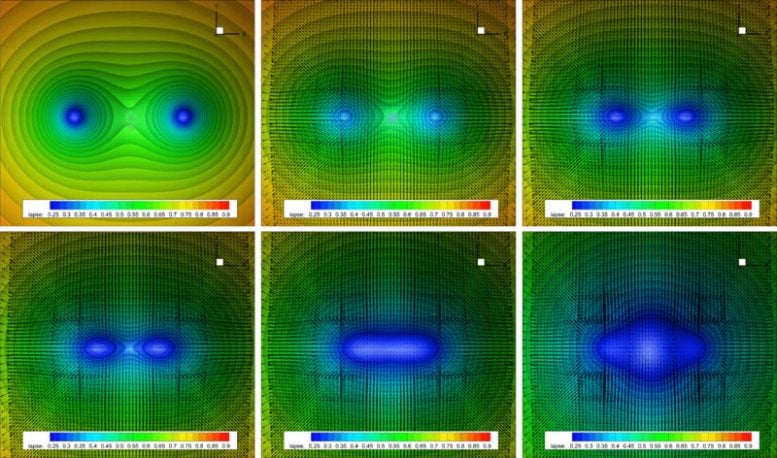
Time evolution of the contour surfaces of the lapse α and the shift vector βi for the head-on collision of two puncture black holes of equal mass M=1 at times t=0,5,7,8,10M and t=15M, from top left to bottom right. Phys. Rev. D 97, 084053, 2018; doi:10.1103/PhysRevD.97.084053
Scientists develop simulation code for new generation of supercomputers. What happens when two black holes merge, or when stars collide with a black hole? This has now been simulated using a novel numerical method. The simulation code ‘ExaHyPE’ is designed in such a way that it will be able to calculate gravitational waves on the future generation of ‘exascale’ supercomputers.
The challenge in simulating black holes lies in the necessity of solving the complex Einstein system of equations...
Read More









Recent Comments